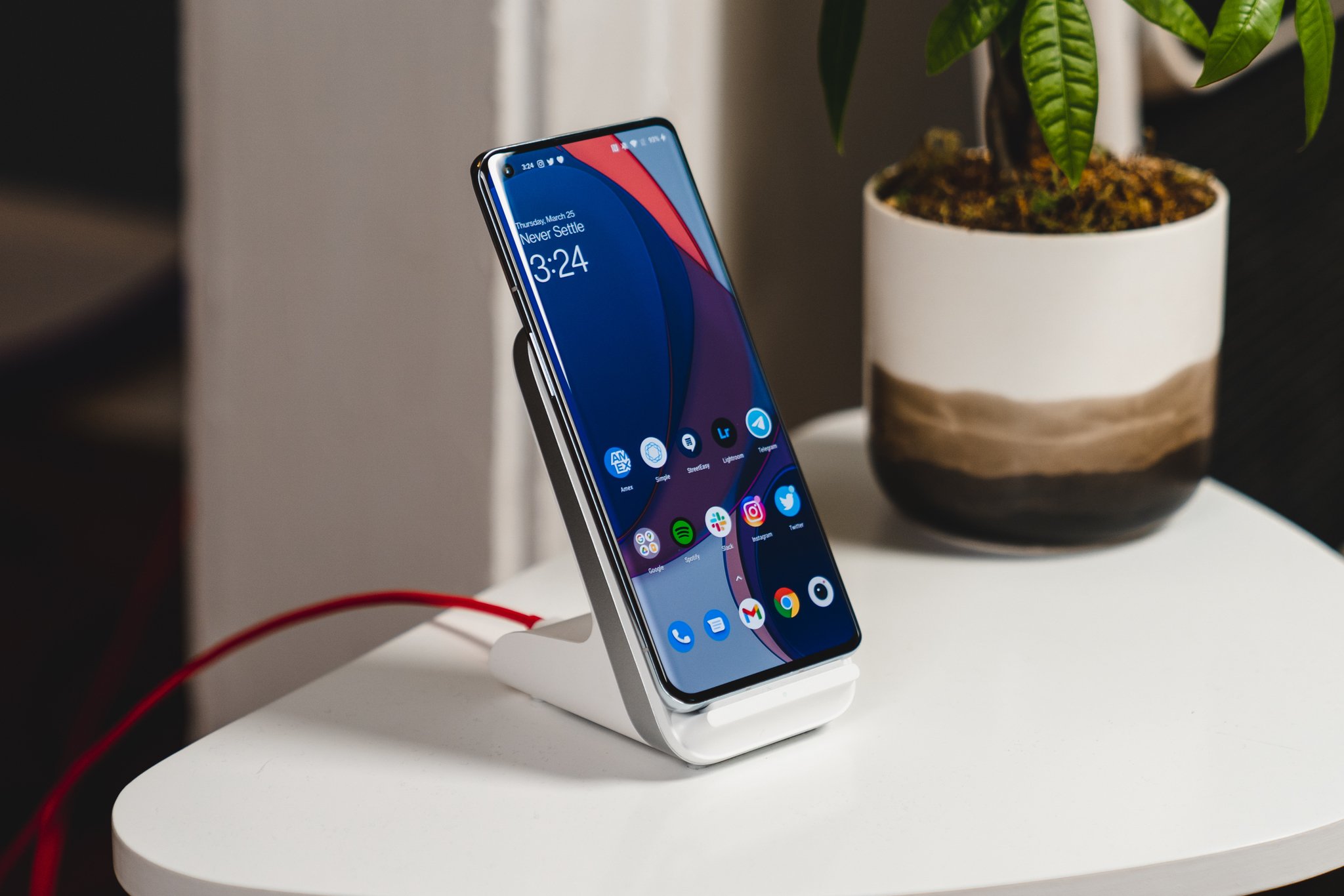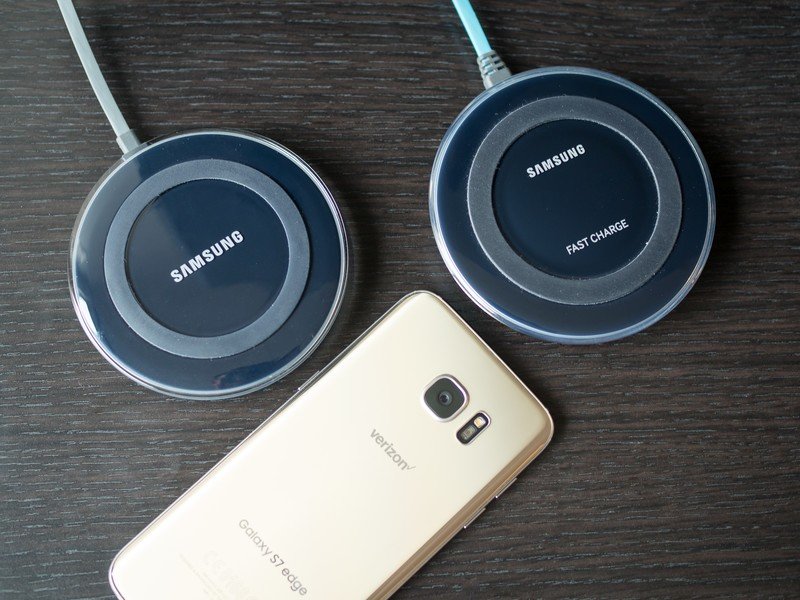Wireless Fast Charging explained

The Qi charging standard has come a long way since it was first specified. What started as a very slow and very wasteful technology to recharge low-power devices (like the battery in your phone) has expanded to include things that need more power like a laptop. The Wireless Power Consortium has even demonstrated the tech powering kitchen appliances at 1kW. But for most of us, the biggest advance has been the introduction of wireless fast charging.
Any Qi-enabled phone will charge on any Qi pad, even if Fast Charge isn't available.
Qi (pronounced Chee and roughly translated to "spiritual energy") is a charging standard. The Wireless Power Consortium — imagine a group of electrical engineers that really love chargers working with the smart people who make things that need to be charged — developed the specification in 2009. The first version supported wireless power transfer up to 4.999 watts, and it worked by using two coils that send a signal across the gap when they get close to each other; the signal triggers magnetic induction that produces electricity on the receiver side. As long as your phone and the coil have the necessary computer logic, it works using very basic principles of electricity.
In the early days, you had to waste a lot of power creating an oscillating magnetic field in the base (transmitter) that was strong enough to induce the same oscillation and field in the receiver in order to charge your phone. And even then it charged very slowly. It was more convenient than efficient.
The folks at the WPC have continued to expand and develop the standard. Besides additions like a medium-power mode that can provide up to 120 watts, they have been working on three specific ways to make it better: a longer range (it's up to 40mm now), higher output that's still done safely, and less wasted power in the form of heat.
BPP and EPP
BPP (Basic Power Profile) and EPP (Extended Power Profile) are the charging specifications included in the current Qi wireless charging certification. They increase the power transfer to 15 watts without any extra electricity wasted as heat. That means the power created by the receiver coil (the one inside your phone) improved by 300%, speeding up the recharge without either coil getting any hotter.
There are some technical differences between the two outlined below, but the basics are really all you need to know: EPP wireless charging is faster than BPP wireless charging, and since Qi is an open standard it can be modified to charge even faster while still backwards compatible with older Qi-enabled phones.
Wireless charging is a very basic idea when it comes to the engineering side of things.
Using a charger and a phone with the "Fast Charge" label you can charge a typical phone to about 50% in 30 minutes, or charge fully in 90 minutes. While not as fast as a wired quick charge solution, this is a lot faster than it used to be.
Be an expert in 5 minutes
Get the latest news from Android Central, your trusted companion in the world of Android
Not all phones charge at the same rate. Vendors are allowed to amend the Qi standard with their own technology as long as they still follow the original and any Qi-compatible device will charge with any Qi-enabled transmitter. Samsung, for example, adds some tech to its best Android phones and the chargers it builds for them. Others like OnePlus have gone all-in and built a custom fast wireless charging system called Warp Charge that can rival wired charging times.
The smart parts

Whether you're wirelessly charging fast or slow, the tech inside has to monitor the transfer rate, the temperature, and the amount of charge the battery has. From a "cold" state, it takes a fair amount of time for things to reach a temperature or charge state where they need to be scaled back, but it will make it there eventually. Reducing the amount of electricity provided (the base modifies the frequency and wavelength of the magnetic field created by its coil) is done to protect the battery and electronics inside your phone from getting too hot. At this point, the power generated is dropped until the battery is full, then it shuts down. Your phone monitors itself and sends the signals to the base that indicate when things need to change.
A lot of engineer speech is involved here, because of the subject matter. Essentially, your phone and your charger carry on a little electronic conversation.
- Phone: I need some power!
- Base: OK, I'll start my end. Make sure you stay close enough so the way my coil hums makes your coil hum, too. If I see your coil stop humming I'll turn everything off.
- Phone: Gotcha. Staying close.
- Base: I see that you are using the latest Qi standard, so I'll go full speed ahead until you give the word.
- Phone: OK, I'm getting warm, so scale things back a little.
- Base: OK. Lowering the frequency and pitch of my coil's hum so things don't get any hotter. Let me know when we're done.
- Phone: My battery is full. You can stop now.
This is how Qi charging has always worked, even though now things are faster. The only differences are changes to the resonant circuits in both the phone and the base that allow the coils to oscillate at a higher frequency with less damping (resistance) and less radiated energy (wasted energy in the form of heat). The current generated is higher while the resistance and heat produced are lower than previous versions, so more juice can flow from the coil in your phone to the battery without things getting too hot too fast. These changes were part of an update to the Qi standard, and everyone who is part of the WPC — Belkin, HTC, Lexus, Motorola, Samsung, Verizon, and the rest of the 230+ members — can use the design to build chargers or compatible devices that all use the same system.
Qi Fast Charge can generate up to 300% more current than the original specification.
The Qi specification is generally followed to the letter by everyone involved. It's also freely available to anyone after a short term of WPC members-only access so everyone can use it — even a startup who might not have an extra $20,000 for the annual fee. So any Qi charger you buy should meet the full specifications. As long as your phone and charging base follow the standards for fast charging, it'll work, plain and simple.
For us as consumers, there isn't a lot to think about. If our phone is Qi Fast Charge compatible and we use a charging base that's also Qi Fast Charge ready, our phone will charge faster. If we have a phone with an even faster charging setup from OnePlus or Xiaomi, for example, using the right charging base will get you there even quicker.
Either way, the system is designed to slow down before things get too hot and shut itself off completely once the battery is full — we don't need to intervene at any level. They're also backwards compatible so all your devices that use it will charge with any charging base, even if Fast Charge isn't available. The one thing you should do is to use the proper wall plug to make sure the right amount of current is available to the charging base and it doesn't overheat or charge too slowly.

Jerry is an amateur woodworker and struggling shade tree mechanic. There's nothing he can't take apart, but many things he can't reassemble. You'll find him writing and speaking his loud opinion on Android Central and occasionally on Threads.
